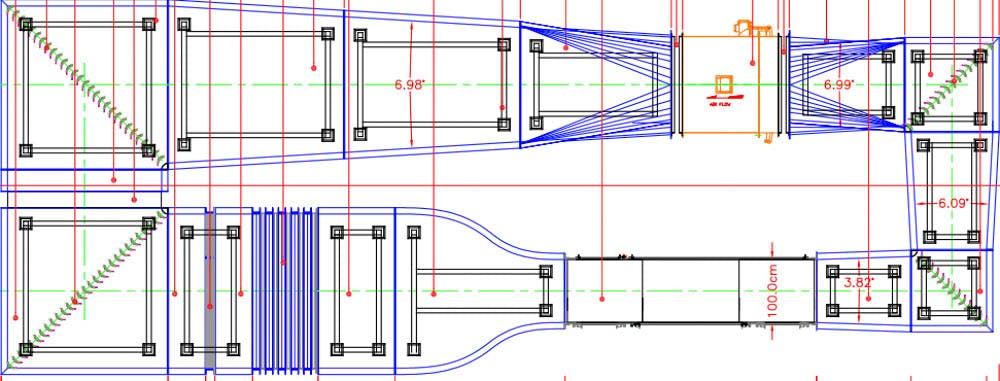The National Science Foundation has awarded two University researchers, Sharon Swartz, professor of biology and engineering, and Kenneth Breuer ’82, professor of engineering, a grant which will be put toward the construction and implementation of a million-dollar wind tunnel facility to study aerodynamics and animal flight.
What began as a simple interaction over coffee nearly 15 years ago has now coalesced into years of collaboration, Swartz said. “Over time, I began to see that incorporating better understanding of aerodynamics into our research program would be really beneficial to us scientifically, but you need the right collaborator for that to work effectively.” This realization led Swartz to reach out to Breuer, whom she began to collaborate with when one of her students wanted to conduct research about gliding mammals, she added.
The Prince Engineering Laboratory is already home to one of the few wind tunnel facilities in the world, but its technology is dated and has limitations, said Senior Associate Dean of Engineering Rod Beresford.
The original wind tunnel’s technology is “becoming obsolete,” Beresford said. He added that it has “been around longer than Kenny Breuer and it’s been around longer than Prince Lab.”
The new wind tunnel will incorporate numerous advanced capabilities such as speed, pressure and temperature controls as well as particle image velocimetry, Swartz said. In particle image velocimetry, “we use tiny microscopic particles, and we image them … to study the velocity of the air,” she added.
This facility will rival similar ones at Ontario’s Western University, Sweden’s Lund University and Stanford University, Swartz said.
This project has had many chapters, as various grant proposals were initially denied due to skepticism surrounding controlled bat flight in a wind tunnel, Breuer said.
“It’s an important aspect of what we do. … You never know if you’re going to win,” Breuer said. “It’s exciting that we’ve got it, and now we have to all pull together to make it happen.” Breuer and four undergraduate engineering students are now in preliminary stages of designing the facility and expect construction to finish by 2019, he added.
Earning grants from institutions such as the NSF or the National Institutes of Health is not a rare occurrence for University professors, Beresford said. The University “has historically been quite successful with this type of funding, with faculty acquiring major research instruments through this grant mechanism.”
The wind tunnel and other such projects that receive grants are also funded in part by the University, Beresford said. “As a faculty member and leader in (the) School of Engineering, it’s really important that Brown continues to step up when its faculty step up and undertake these major proposals,” he added.
Swartz intends to use the new wind tunnel’s technology to research the impact of temperature conditions on muscle movements and other aspects of bat flight, Swartz said.
“I have developed … an interest in using engineering or physical science principles, such as physics and mechanics and materials and mechanics of fluids to understand biological processes. I’m interested in how do animals achieve flight — bats in particular — but animals in general,” Breuer said.
The hope is that researchers at numerous universities such as the University of Rhode Island, University of Massachusetts at Amherst, Texas Tech University, Miami University in Ohio and more will be able venture to Providence to make use of the new facility, Swartz said.





